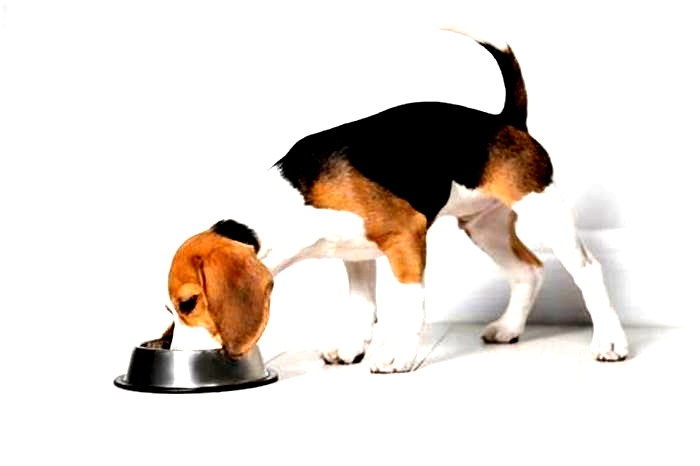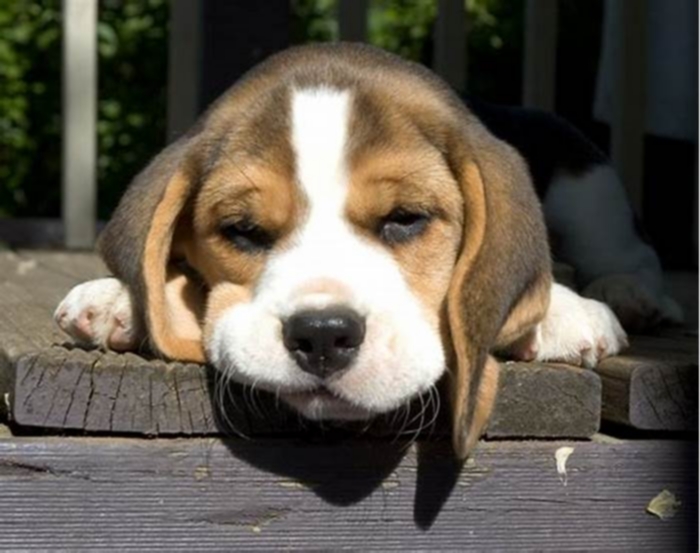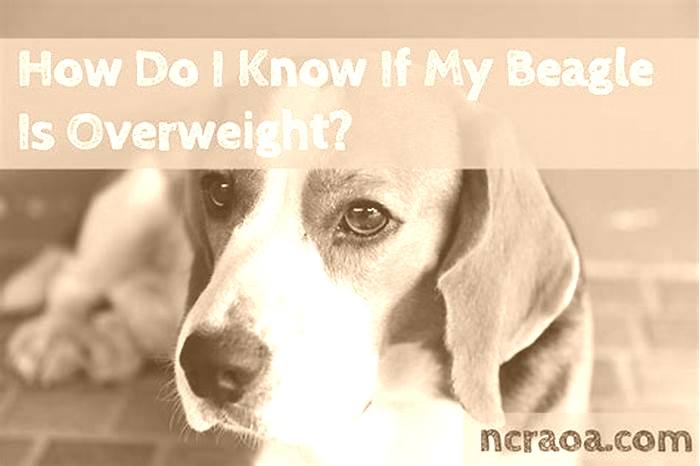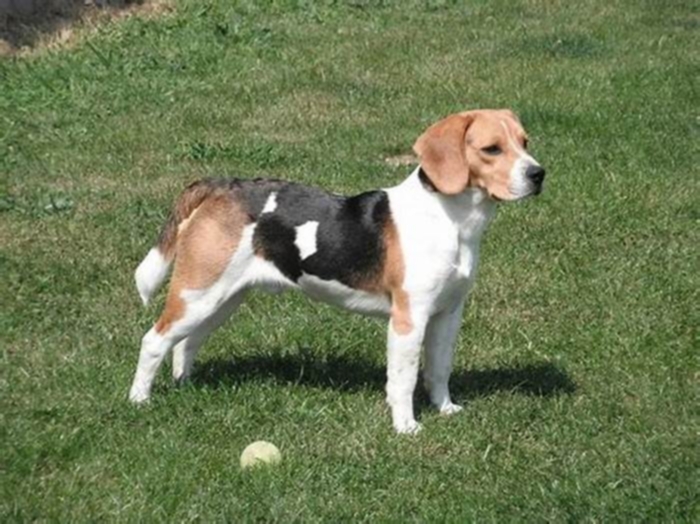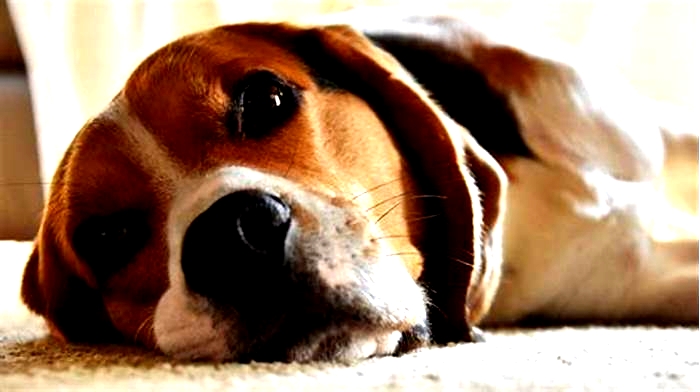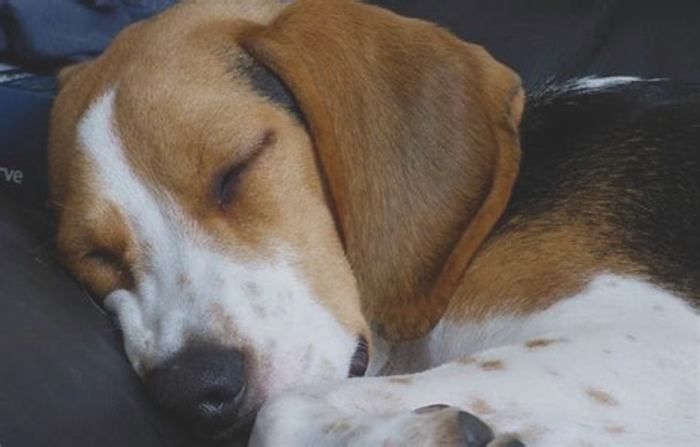What is a bad Beagle behavior
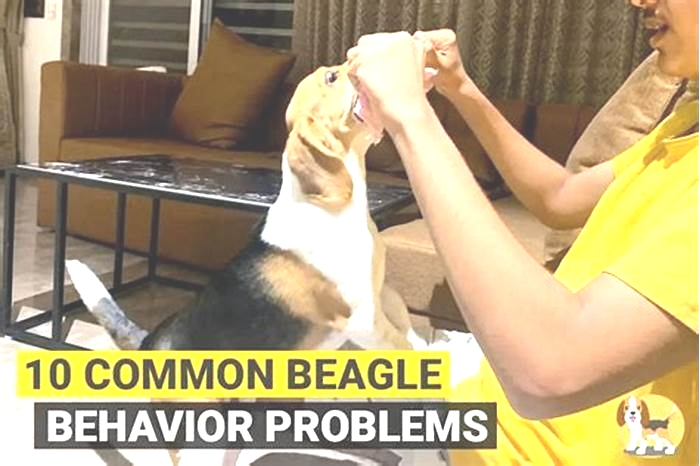
Beagle Behavior by Age (What Changes to Expect)
You might have seen beagles who are very calm and gentle, and obedient. On the other hand, your beagle puppy is naughty and mischievous.
Well, theres nothing to worry about. The behavior of beagles changes by their age. You can expect different behavior at different stages of their life:
Beagles are super energetic and playful in their puppyhood. Between their adolescent age of 6 to 12 months, their behavior can be unpredictable and less obedient. They are relatively calm in their adult age, and they become slow and lazy in their senior years.
Further, we will have a deeper understanding of the behavior changes of Beagles as per their age.
Beagle Behavior at 0-2 Weeks
Beagles at this age are a newborn. They wont be doing much apart from sleeping and eating.
The eyes of the newborns remain closed in the first two weeks. They wont be able to see anything. Apart from that, at this age, they are deaf too. They will hardly react to anything.
Beagle Behavior at 2-4 Weeks
They will finally open their eyes, and over the weeks, their vision will become clearer. They will also be able to hear you now.
They will stick around their mother and still spend most of their time sleeping. By the 4th week, they may crawl and try to explore their environment.
Beagle Behavior at 4-8 weeks
Over these weeks, all their senses of hearing, smelling, and seeing will develop. But make sure not to expose them to strong light and loud noises just yet.
They will be even more curious. They would want to explore their surroundings, smell things and listen to different sounds.
They will still spend most of the time sleeping. But while awake, expect them to be playful and mischievous with their siblings and mother.
The latter part of this stage is very important. This is the time when they will learn basic socialization skills from their mother and siblings. So make sure not to separate your pup from its family.
Beagle Behavior at 8-12 weeks
At this stage, beagle puppies are ready to go to their new home with their new family.
They will have a better sense of hearing and will be able to understand few commands. However, they are still fearful at this age, so do not expose them to loud music or sounds.
They will be much more curious to explore their new home. They may go to different rooms and smell things around the house.
They will sleep for more than 18 hours a day, but they will be curious and playful when they are awake.
Beagle Behavior at 3-6 months old
At this age, you will get to see your puppys true energy level. They will be running around all over the house, chewing on things, and even biting you.
They will test their boundaries to see how far they can push you. For instance, they may bark for a longer period until they get something. They may even bite you when things dont go their way.
When Groot was at this stage, I almost thought my beagle is aggressive and totally out of control. But, the Groot(2 years old) that we know now is a very well-behaved, gentle, and obedient dog.
This is the right time to start with your beagles obedient training. Consistent training using positive reinforcement will help you shape your beagle into a perfect companion.
Later in this stage, they may also attempt to dominate you and become alpha themselves. So make sure to teach them the proper hierarchy of your family. They need to understand that they are a part of your family, but they are at the bottom of the hierarchy.
Beagle Behavior at 6 to 12 months old
Its all uphill from here. Your beagle will start becoming calmer with every passing day. All their bad behaviors will start fading down. With consistent training and positive reinforcements, the pup will be much more obedient.
Your beagle will still try to test their boundaries now and then. You will often find them chewing on furniture or notice other destructive behaviors.
So it is crucial to train them regularly and correct their behaviors using positive reinforcements.
Nevertheless, they will still be hyperactive and equally curious about everything. They will still have a strong urge to explore new places and smell different scents.
Male beagles may get into a habit of humping things or even people. You can read more about why do beagle puppies hump here.
Beagle Behavior at 1-2 years old
Your beagle is no more a puppy now, he or she has become an adult. Their growth rate will slow down, but they will continue to grow until 18 months old.
They will be less curious and more mature at this age. At this stage, you will get to know the true personality of your beagle. You will be able to see their love and affection for you.
They will have slightly better control over their impulses and excitement. You will notice that your training has finally paid off.
Your beagle will be much more disciplined and well-behaved.However, you must continue with their training.
They may show destructive behavior if you dont provide them enough exercise. So take them out on long walks daily and play with them.
Beagle Behavior at 2-9 years old
Your beagle will become much calmer and obedient when they turn 2. They will be in the best form of their life.
You will get to see a totally different side of your dog, and you will love it.
There will be a deep connection between you two. You both will have a better understanding of each other.
Beagle Behavior at 9 15 years old
At this age, the senior years of your beagle start. They will still be loving and affectionate towards you and other family members. But they will be a lot calmer and inactive.
There will be a notable difference in their behavior too. They will act OLD.
They wont run around the house or jump on you to get your food anymore. They will be a lot more inactive and lazy. They will spend most of their time sleeping and lying in their bed.
Beagle Behavior by Age Chart
| Beagle Age | Behavior |
|---|---|
| 0-2 weeks | They wont be able to see anything and sleep most of the time. |
| 2-4 weeks | They will be able to see and crawl. |
| 4-8 weeks | Their sense develops, and they become more curious. |
| 8-12 weeks | They are ready to join their new family. They will be a lot more curious but fearful. |
| 3-6 months old | The toughest time for beagle owners. They may chew, bite and show destructive behavior. |
| 6 to 12 months old | They start to calm down but still have some bad behaviors. |
| 1-2 years old | They are much calmer. But can show destructive behavior now and then. |
| 2-9 years old | They are energetic, playful but yet well-behaved, obedient, and affectionate. |
| 9-15 years old | Loving and affectionate but inactive. |
Beagle Behavior
5:30 PM Dinner time. It is important to choose mealtimes for your dog and to keep those times. Even if your dinner is a bit behind, do be sure to
feed your Beaglethe same times each day.
6:00 PM Evening walk. You should first bring your puppy to the designated area to urinate and/or eliminate and then go for the walk. This evening walk is important for 2 reasons. Your puppy needs
exercise to maintain healthand this evening walk will tire him or her out and help induce a good nights sleep.
7:00 PM Downtime with the family. Your Beagle may wish to sit with the family or to go on his own to play with his toys. Either is acceptable behavior. Although you may wish for him to sit with you, be happy if he goes to play independently; this will help when it comes time to be home alone.
8:00 PM Last time of going outside. Before your Beagle gets ready for sleep, be sure to allow him to go outside, whether you have a puppy or an adult.
8:30 PM Sleep time. Now that the day has been filled with activities, it is time to sleep. There are many elements needed to help your Beagle sleep good through the night.
The puppy or dog must have his own special area. This should be a quality canine dog bed that properly supports the body to prevent back issues and to offer muscles appropriate support for a growing body.
If your Beagle is home alone during the day, it's best for this to be placed in his gated off area; this promotes better behavior at other times since the area will not just be seen as a place to go when owners leave.
If you decide to have your Beagle sleep in your bed, be very careful if he or she is young. Your pup should be placed in the top corner of a bed that is cornered against 2 walls.
Beagles: What's Good About 'Em, What's Bad About 'Em
Beagle temperament, personality, training, behavior, pros and cons, advice, and information, by Michele Welton, Dog Trainer, Behavioral Consultant, Author of 15 Dog Books
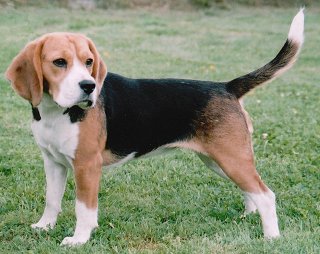
Beagles are conveniently-sized, handsome and easy-to-groom, friendly with people, peaceful with other pets. And with their appealing soulful expression, it's perfectly natural that many people consider them as potentially wonderful pets.
However, Beagles were developed as hunting hounds. They need much more exercise than most people give them, which is why you see so many fat Beagles.
Though they're often kept in city apartments or condos, they should not be. Beagles require long frequent walks and a fenced yard where they can stretch their legs off-leash FENCED because Beagles are explorers and chasers who will follow their nose wherever that fascinating sight or smell takes them. And since Beagles (like most hunting hounds) are endowed with selective deafness, they seldom come back when you call them.
In addition, you can't leave them outside unmonitored, for Beagles are prone to wanderlust and can be adept climbers and diggers, i.e. escape artists. Also, Beagles left outside become bored and then they bay and howl and dig holes.
One more thing..... most Beagles are chowhounds, so keep your trash cans out of reach and never set your plate of food down where he can get to it.
The Beagle's vast stubbornness and distractability call for consistent and persistent training based on respect. Food rewards can be a great motivator for Beagles, but if you base all of your training on food, your Beagle will only obey when you have a cookie in your hand obviously not a good situation.
- Is conveniently-sized, sturdy, and athletic
- Is completely natural in appearance
- Has a short easy-care coat
- Loves exercise, play, and outdoor activities
- Is good-natured and peaceful with everyone
A Beagle may be right for you.
- An extremely careful search to find good-tempered lines
- Providing a goodly amount of exercise, not just a couple of walks around the block
- Destructiveness when bored or not exercised enough
- An independent "what's in it for me?" attitude can be obstinate
- Keeping him on-leash or securely fenced
- Controlling baying and howling
- Slowness to housebreak
- Moderate to heavy shedding
- A distinctive doggy odor
- Concerns about a lot of potential health problems in the breed
A Beagle may not be right for you.
 | Dog Breed Traits Which Traits Are Right For You? In this brand new series, I'll help you decide which dog breed traits would best suit you and your family, your home and yard, and your lifestyle, so you can choose the best dog breed for your family. |

- You can avoid some negative traits by choosing an ADULT dog from an animal shelter or rescue group. With an adult dog, you can easily see what you're getting, and plenty of adult Beagles have already proven themselves not to have negative characteristics.
- If you want a puppy, you can avoid some negative traits by choosing the right breeder and the right puppy.
If I was considering a Beagle, I would be most concerned about...
- Unstable temperaments. Beagles are supposed to be a stable, reliable breed. Unfortunately, obedience instructors and behavioral consultants, like myself, see too many Beagles who are fearful or neurotic. If you're considering a Beagle puppy, you need to look carefully at the temperament of BOTH parents.
- Providing enough exercise. Beagles need more exercise than the typical amble around the block that many owners give them. Beagles who don't get enough exercise become bored, destructive, noisy, and/or obese, which puts stress on their joints and causes health problems. Beagles need regular opportunities to stretch their legs and RUN, if you want them to remain healthy and fit.
But Beagles should run inside an enclosed area like a yard or dog park. You shouldn't trust these dogs off-leash they will follow their nose wherever it leads them and pursue anything that runs.
- Fence security. Many Beagles are clever escape artists who will go over or under fences in search of adventure. You may need higher fences than you might imagine for their small size. They can climb chain link. You may also need to sink wire into the ground along the fence line to thwart digging. Gates should have the highest quality locks, as some Beagles can open flimsy latches.
- Housebreaking. Many Beagles are a little slow to pick up on the housebreaking concept. Expect several months of consistent crate training before the light bulb goes on. Read more on housebreaking.
- Noise. Beagles should never be left outside in your yard, unsupervised. Their mournful baying and howling will have your neighbors calling the cops to report the nuisance, or quietly letting your Beagle out of his yard so he'll wander away and stop disturbing them.
- Stubbornness. Beagles are not easy to train. Truth be told, they are independent thinkers who don't particularly care about pleasing you. Food is a great motivator with Beagles, but too many cookies equals a fat Beagle. Also you don't want a dog who only obeys when you're waving a biscuit. Instead you should establish the right relationship between the two of you, where you are the leader and he is the follower. Read my free online training programs.
- Shedding and doggy odor. For such a shorthaired dog, Beagles shed much more than you might think on the high side of average. In addition, like all scenthounds, Beagles have a distinct doggy odor.
- Potential health problems. Many Beagles live a good long life, but they are prone to a dismaying number of health problems, including itchy skin conditions, ear infections, many different eye disease, joint problems, hypothyroidism, diabetes, epilepsy, and heart disease. Read more about Beagle Health.


